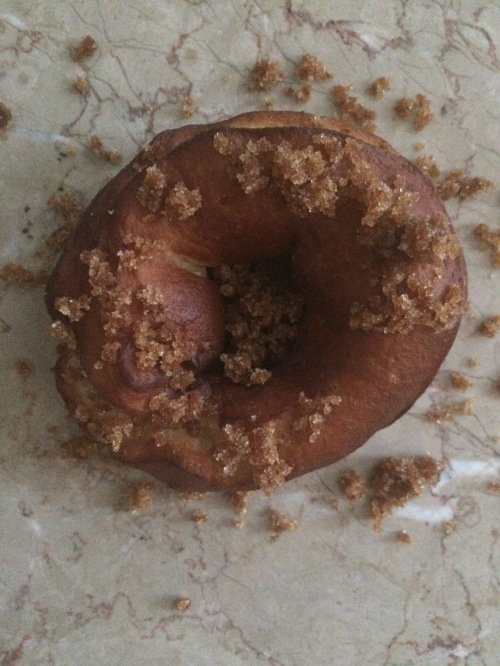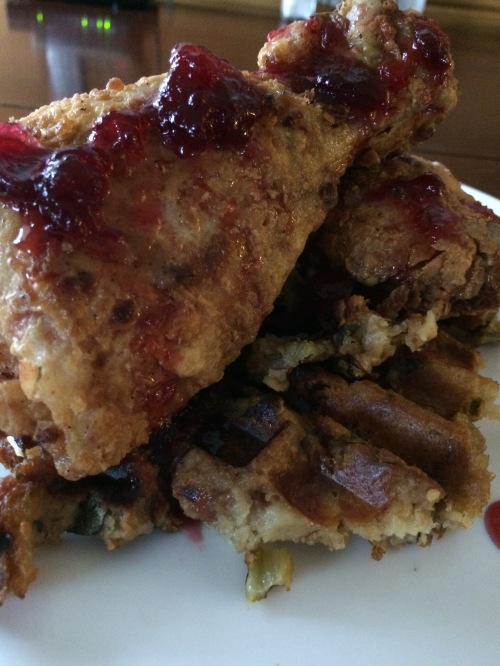In the words of Boston’s Tom Scholz, “It’s been such a long time, I think I should be goin’, yeah”. In this case, such a long time is just over 4 months. To say the very least, the end of 2017 was incredibly hectic for me. Insanely busy days at work, coupled with the stress of moving yet again (for anyone keeping, this makes the 7th time I’ve moved in the past 5 years), and some latent mental health issues I’d been avoiding. But I’m presently doing better than I have in a long time. There’s still bad days, and there always will be, but the good ones are gradually outnumbering them; At the end of the day, that’s really the best you can hope for.
I think, generally speaking, when it comes to writing, I work best when given a ballpark to play in. By that, I mean that it sometimes seems difficult for me to come up with something that really interests me or grabs my attention. I enjoy such a wide variety of things, that it’s hard to pick one thing and run with it. It’s similar to my reaction when folks ask me “Oh, you’re a chef, what’s your favorite thing to cook?”. I honestly never have a good answer. Usually my response is something along the lines of “anything that doesn’t suck”.
This week I wandered back into the 52 Weeks of Cooking challenge (surprise, surprise), and was greeted with a conundrum. First theme: New to You. Fuck. Having cooked professionally my entire life, I’ve seen, done and experienced an insane amount of what the food world has to offer. That’s not to say there isn’t always something new to see, do, or experience, but it puts me back in the position of trying to pinpoint what’s going to be it.
This week has been monstrously cold in Vermont. Like, -24 goddamn degrees before the wind chill. With that in mind, I knew I wanted to do something warm, a bit hearty. For whatever reason, my mind jumped to a recipe that I had wanted to try for years, but never got around to it. I’ve made no secret of the fact that I’m a huge nerd. One thing that I’ve never really touched on on C&K is my love for the Legend of Zelda series. It was one of the first games I can remember playing, and I’ve loved the series from the get-go. The cooking mechanic introduced in Breath of the Wild brought in a lot of cool possibilities for translating the in-game foods into actual dishes. But the dish I was interested in didn’t come from this newest instalment, but instead from more than a decade earlier: Yeto’s Superb Soup from Twilight Princess.
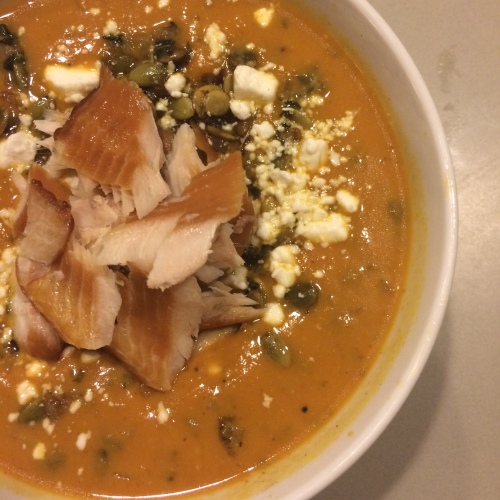
In Twilight Princess, Link’s quest takes him to the frigid summit of Snowpeak, in the northern province of Hyrule. There, Link meets Yeto, a yeti, who lives with his wife Yeta in the ruins of a great mansion. Yeta is sick, and Yeto tasks link with helping to make a soup in order to heal her. There’s a lot more detail I’d love to go into about how this part of the game is really awesome, but for now we’ll focus on the soup.
The “Simple” version of the soup is broth-based, with the Hylian Reekfish featuring as the main ingredient. The addition of an Ordon Pumpkin makes the soup “Good”, and a final addition of Ordon Goat Cheese brings it to “Superb”. Working off these basic parameters, it’s fairly easy to translate into a working recipe.
Thick, hearty, and gut-filling, this soup was just what I needed for the bone-chilling weather we’ve been stuck with lately.
Yeto’s Superb Soup
serves 2
- Butter, 6 tablespoons, divided
- Vidalia Onion, 1 each
- Sage, 1/2 bunch
- Pumpkin, 1 can*
- Chicken or Fish Stock, about 3 cups
- Goat Cheese, crumbled, 4oz, divided
- Kosher Salt, to taste
- Black Pepper, ground, to taste
- Garlic Powder, to taste
- Pumpkin Seed, about 1/4 cup
- Smoked Trout, 1 filet**
In a medium sauce pot, melt butter over medium heat. Peel and finely dice onion. Add 3/4 of the onion to the pot and cook until softened, about 4 minutes. Mince sage and add half to cooked onions, cooking about 1 minute. Add pumpkin and cook until it begins to brown, about 5 minutes. Add stock, whisking to combine. Bring to a simmer and add half of the goat cheese. Continue simmering until cheese is melted. Season to taste with salt, pepper and garlic.
In a separate saute pan, melt remaining butter over medium-high heat. Add remaining onions and sage. Cook until onions begin to brown, about 6 minutes. Add pumpkin seeds and cook until toasted, about 2 minutes.
Garnish soup with pumpkin seed mixture and flaked trout.
*Make sure you get 100% pumpkin and not a pumpkin pie mix
**The Hylian Reekfish is actually based on the Coho Salmon, but in my head there’s no way they’re keeping fresh fish on a snow-and-ice-covered mountain top. Yeto probably would have smoked or cured any fish that he caught.

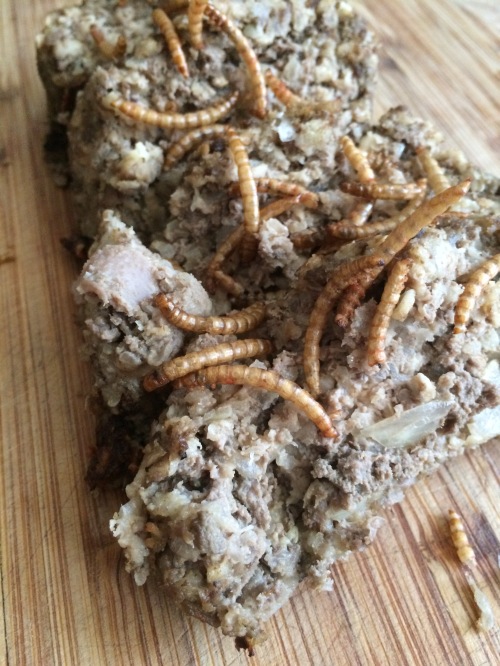
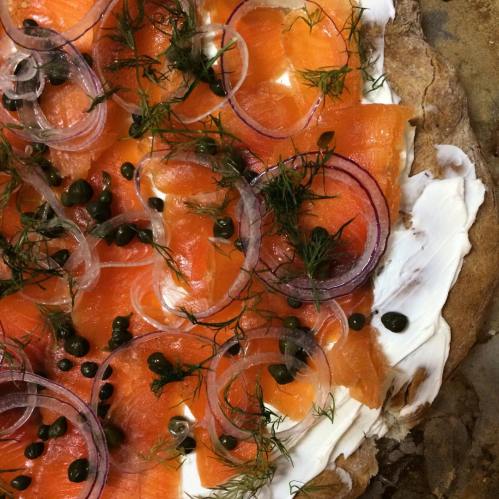



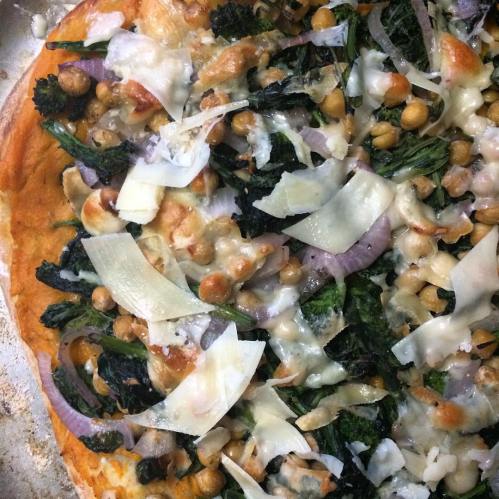
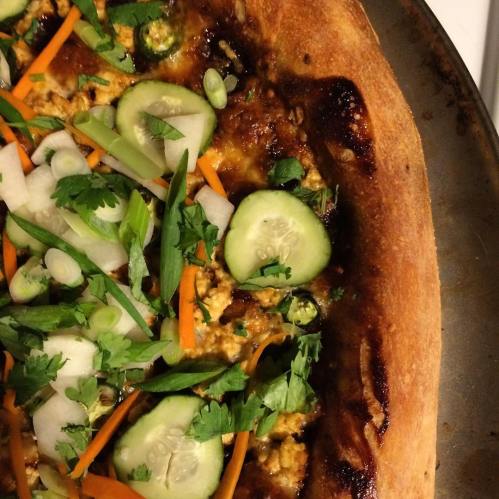 Hoisin, Marinated Tofu, Mixed Pickles, Serrano, Fresh Herbs (A Banh Mi-zza, if you will)
Hoisin, Marinated Tofu, Mixed Pickles, Serrano, Fresh Herbs (A Banh Mi-zza, if you will)
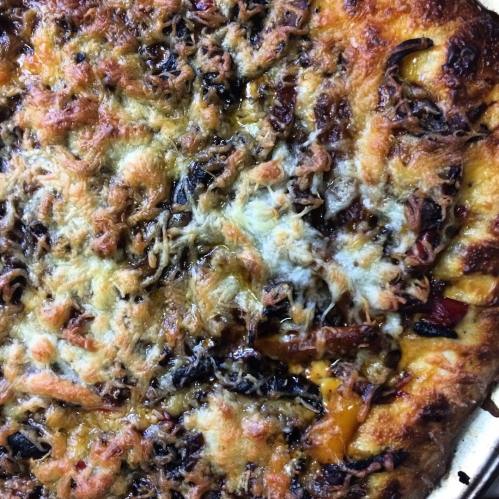

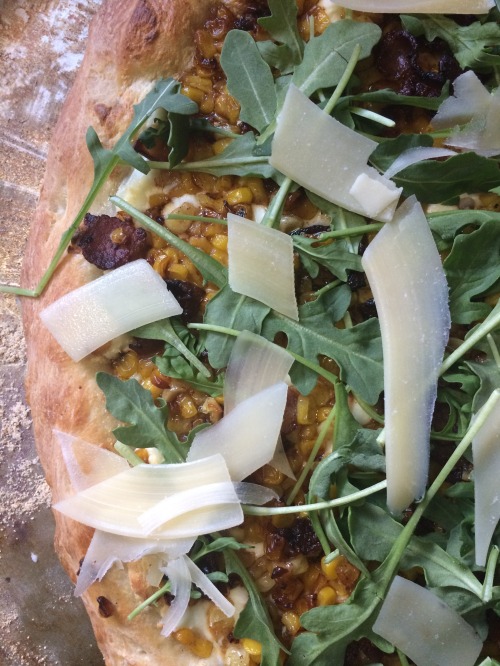 Ricotta & Chevre, Sweet Corn, Maple Bacon, Arugula, Parmesan
Ricotta & Chevre, Sweet Corn, Maple Bacon, Arugula, Parmesan


